After careful consideration and a thorough review of the increased costs necessary to provide reliable essential services, support the increase of load in our service territory, and to meet the state’s climate mandates, Turlock Irrigation District has increased rates for the first time in 10 years.
Rather than recommend one large increase, TID Board of Directors approved incorporating the total necessary increase over the next three years. TID has 27 different rate types or tariffs. Each rate type was evaluated based on the cost to provide service to that group and each will be effected differently by the rate update. The two rate types shown below represent 88% of all TID service meters.
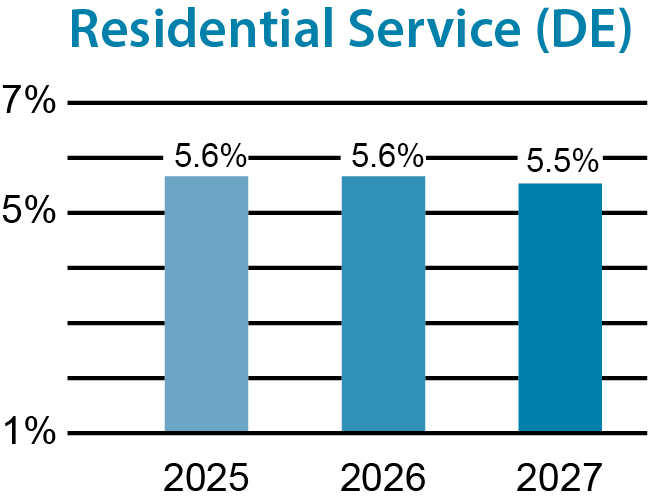
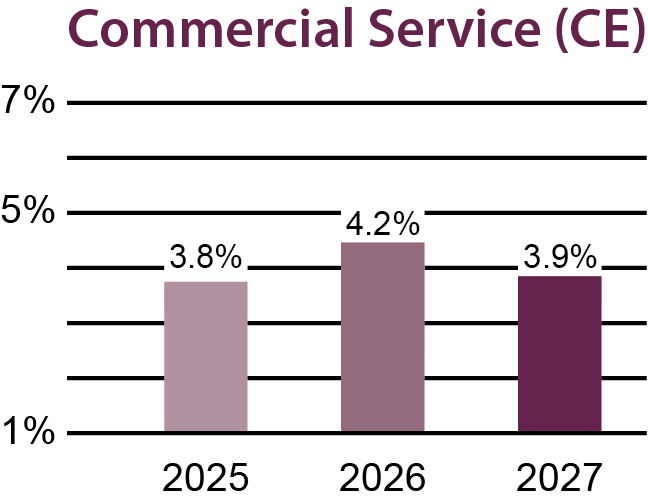
To estimate what your summer monthly bill may be under the rate update, enter your kWh usage below.
Disclaimer: The Bill Calculator above is an estimate and only intended to be used for informational purposes. Actual electric bill and charges may differ from what is presented in the calculator. Calculator shows an estimate for a residential customer (DE), during winter billing months, who is not enrolled in TID’s Cares or Medical Rate assistance programs and who doesn’t have solar generation attached to their meter. The calculator does not include other applicable taxes, such as city tax.
 Recommended Residential (DE) Rate Tariff
Recommended Residential (DE) Rate Tariff
 Recommended Residential Electric Vehicle (DT) Rate Tariff
Recommended Residential Electric Vehicle (DT) Rate Tariff
 Recommended Residential Self Generation (DG) Rate Tariff
Recommended Residential Self Generation (DG) Rate Tariff
 Recommended Commercial (CE) Rate Tariff
Recommended Commercial (CE) Rate Tariff
 Recommended Commercial Time of Use (CT) Rate Tariff
Recommended Commercial Time of Use (CT) Rate Tariff
 Recommended Commercial Self Generation (CG) Rate Tariff
Recommended Commercial Self Generation (CG) Rate Tariff
 Recommended Small Industrial (ID) Rate Tariff
Recommended Small Industrial (ID) Rate Tariff
 Recommended Small Industrial Time of Use (IT) Rate Tariff
Recommended Small Industrial Time of Use (IT) Rate Tariff
 Recommended Small Industrial Self Generation (IG) Rate Tariff
Recommended Small Industrial Self Generation (IG) Rate Tariff
 Recommended Large Industrial (HT) Rate Tariff
Recommended Large Industrial (HT) Rate Tariff
 Recommended Large Industrial Self Generation (HG) Rate Tariff
Recommended Large Industrial Self Generation (HG) Rate Tariff
 Recommended Very Large Industrial (XT) Rate Tariff
Recommended Very Large Industrial (XT) Rate Tariff
 Recommended Bulk Power Industrial (BP) Rate Tariff
Recommended Bulk Power Industrial (BP) Rate Tariff
 Recommended Bulk Power Industrial Self Generation (BG) Rate Tariff
Recommended Bulk Power Industrial Self Generation (BG) Rate Tariff
 Recommended Farm (FE) Rate Tariff
Recommended Farm (FE) Rate Tariff
 Recommended Farm Demand (FD) Rate Tariff
Recommended Farm Demand (FD) Rate Tariff
 Recommended Farm Time of Use (FT) Rate Tariff
Recommended Farm Time of Use (FT) Rate Tariff
 Recommended Farm Self Generation (FG) Rate Tariff
Recommended Farm Self Generation (FG) Rate Tariff
 Recommended Restricted Irrigation Pumping (PI) Rate Tariff
Recommended Restricted Irrigation Pumping (PI) Rate Tariff
 Recommended Restricted Irrigation Pumping Time of Use (PT) Rate Tariff
Recommended Restricted Irrigation Pumping Time of Use (PT) Rate Tariff
 Recommended Municipal Connected Load (MC) Rate Tariff
Recommended Municipal Connected Load (MC) Rate Tariff
 Recommended Municipal Demand Metered (MD) Rate Tariff
Recommended Municipal Demand Metered (MD) Rate Tariff
 Recommended Municipal Self Generation (MG) Rate Tariff
Recommended Municipal Self Generation (MG) Rate Tariff
 Recommended Street Lighting Customer Owned (LC) Rate Tariff
Recommended Street Lighting Customer Owned (LC) Rate Tariff
 Recommended Street Lighting District Owned (LD) Rate Tariff
Recommended Street Lighting District Owned (LD) Rate Tariff
 Recommended Lighting Outdoor Use (LO) Rate Tariff
Recommended Lighting Outdoor Use (LO) Rate Tariff
 Recommended Flat Rate (NM) Rate Tariff
Recommended Flat Rate (NM) Rate Tariff
 Recommended Conditions and Surcharges
Recommended Conditions and Surcharges
As your community-owned utility, TID has worked hard to provide the lowest electric rates in the region and some of the lowest throughout the state. Even with the approved rate increase, TID rates are still be the lowest each year compared to other utilities’ 2025 rates.
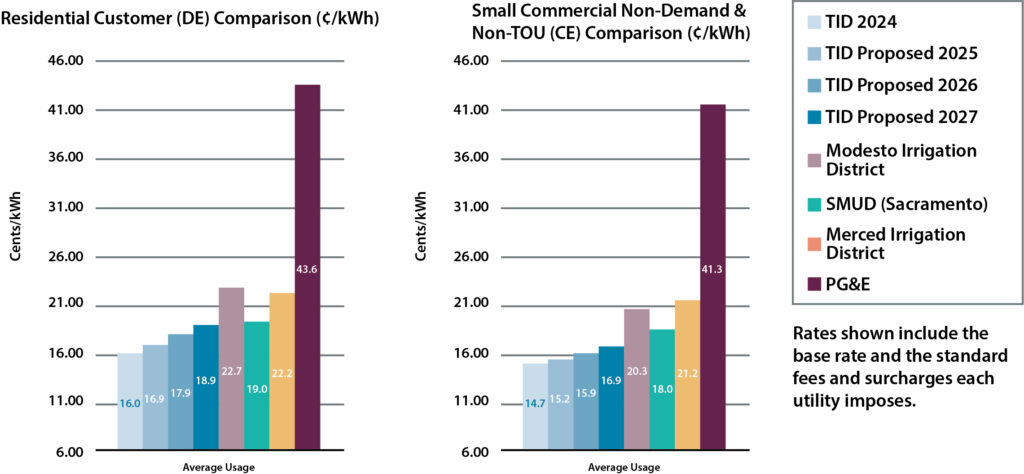
The Board of Directors adopted the proposed rates at the November 26, 2024 public hearing.
To learn more on how these important TID projects will affect future TID electric and irrigation water rates, we encourage you to attend or tune in to the following public workshops.
All meetings will be held at 333 E. Canal Drive, Turlock or www.TID.org/BoardMeetings.
Included in rate evaluation are factors that impact our ability to maintain our current level of reliability, carry out needed capital improvement projects to update aging infrastructure, add new infrastructure to accommodate electrification, and increase renewable energy generation to meet State mandates.
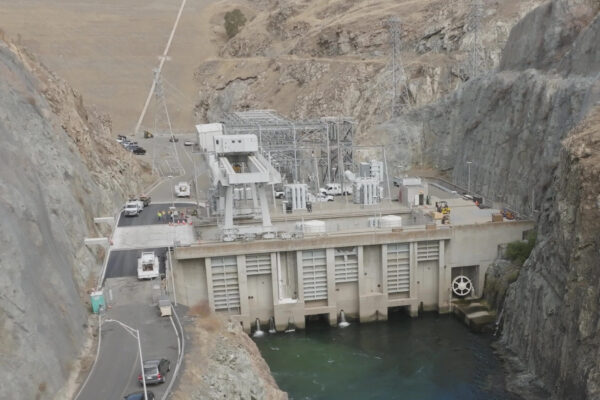
TID customers benefit from the District owning and operating an integrated electric generation, transmission and distribution system that keeps electricity flowing to 240,000 people. Improvements that fortify our existing infrastructure are required to preserve the integrity of our system and maintain our strong record of reliability.
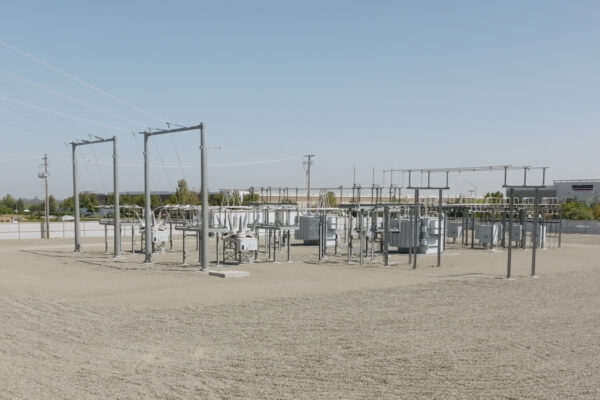
TID serves a vast 662-square mile territory, in a region that continues to see growth through housing developments, business expansions, and the increase of electrification in all sectors. This inevitable growth creates the need for new infrastructure to meet existing demand and prepare for the future.

California’s approach to combating climate change through ambitious renewable mandates, carbon removal, and zero-emission vehicle goals is admirable but also means additional costs to our budget.
This graphic shows TID expenditures by Functional Area.
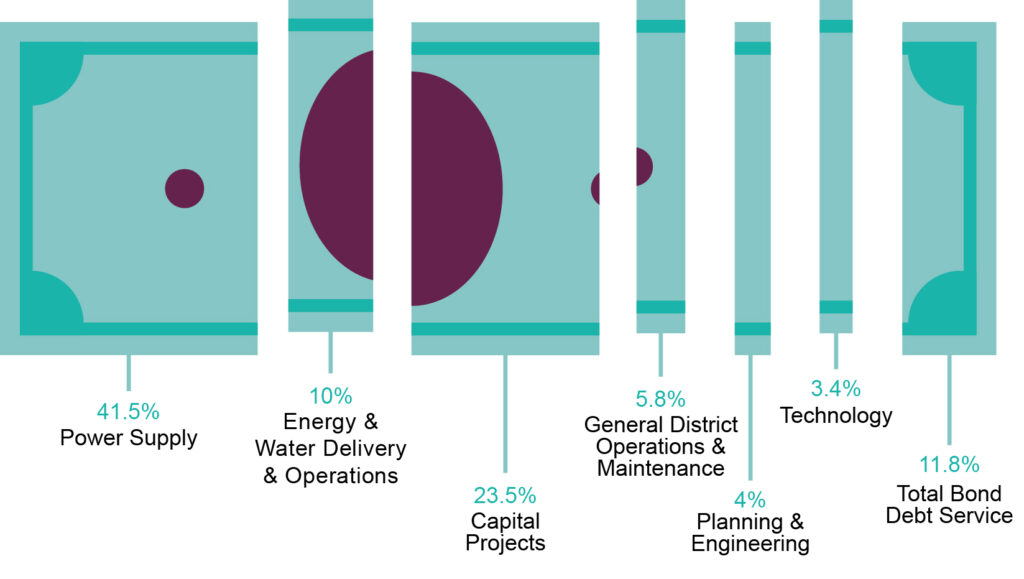
Total labor cost, including salaries, benefits and pension obligations, make up 21% of the budget, distributed amongst the functional areas.

TID is proposing a 16.7% rate increase, spread out over three years – 5.6% in 2025, 5.6% in 2026, and 5.5% in 2027 – for residential (DE) customers. However, each rate class will see a different increase, depending the costs to serve each rate type. Below is a table listing the proposed rate increase by rate type.
Residential Service (DE)
Commercial Service (CE)
Note that some rate types are proposed to increase more than others. This difference is based on the cost to serve that particular rate – domestic, commercial, industrial, etc. For full list proposed electric rate changes by rate type, click here.

If approved, the proposed rate increase will go into effect on January 1, 2025.

TID electric customers have not experienced a rate increase since January 1, 2015.

As a community-owned utility, TID has worked hard to provide the lowest electric rates in our region. However given the increased costs to provide reliable electricity, the increase of load in our service territory, and the anticipated growth in demand, it was necessary for TID to propose an electric rate increase to match the changing cost of continuing to provide reliable service.

Each year TID faces tough budgeting decisions, with the underlining goal of providing reliable electricity at an affordable rate. We have reached the point where our current rates will not support the rising costs to provide reliable electricity, upgrades to facilities that are nearing end of life, address an increasing load, nor will they support the costs associated with complying with California’s ambitious renewable energy mandates. All of these factors have made it necessary to look at the current cost to provide ongoing reliable electricity, resulting in a proposed rate increase.

The bill impacts for both residential and non-residential customers will depend on how much electricity customers use each month. An average Residential (DE) customer using 905 Kilowatt hours (kWh) per month will see an average monthly bill increase from $145 to $153.
TID has a Bill Calculator to help residential customers compare their electric bill under current and proposed rates. Customers can try the Bill Calculator here.
The Bill Calculator above is an estimate and only intended to be used for informational purposes. Actual electric bill and charges may differ from what is presented in the calculator. Calculator shows an estimate for a residential customer (DE), during winter billing months, who is not enrolled in TID’s Cares or Medical Rate assistance programs and who doesn’t have solar generation attached to their meter. The calculator does not include other applicable taxes, such as city tax.

TID has worked hard to consistently provide the lowest electric rates in our region.

Even with proposed rate updates, TID’s rates will continue to be the lowest in the region and among the lowest in the state.

TID reevaluates the cost to provide service annually and has been able to make smart budgeting decisions that have prevented a rate increase for the last ten years. Currently, TID’s proposed rate updates include the following increases:


TID is proposing to spread the needed rate increase across multiple years to reduce immediate impacts to customers.

Visit TID.org/RateUpdates to find additional information on the proposed rate increase.
TID Electric Rate Workshop: Tuesday, October 29, 2024 at 9am at the TID Board Room in the Turlock office located at 333 E. Canal Drive, Turlock.

Utility Consumption Data
This section lists the amount of electricity used by the customer during the billing cycle. You’ll also find the date your usage was recorded.
Summary
The summary section includes the breakdown of all charges for the current billing period.

| Power Supply | 41.5% |
| Energy & Water Delivery & Operations | 10% |
| Planning & Engineering | 4% |
| General District Operations & Maintenance | 5.8% |
| Technology | 3.4% |
| Capital Projects | 23.5% |
| Total Bond Debt Service | 11.8% |

Bolstering RELIABILITY and ensuring the longevity and efficiency of existing resources.
TID customers benefit from the District owning and operating an integrated electric generation, transmission and distribution system that keeps electricity flowing to 240,000 people. Improvements that fortify our existing infrastructure are required to preserve the integrity of our system and
maintain our strong record of reliability.
Examples of reliability efforts:
INFRASTRUCTURE needs require the addition of necessary generation, distribution and transmission
TID serves a vast 662-square mile territory, in a region that continues to see growth through housing
developments, business expansions, and the increase of electrification in all sectors. This inevitable
growth creates the need for new infrastructure to meet existing demand and prepare for the future.
Examples of necessary infrastructure:
STATE MANDATES require meeting the aggressive energy goals of the state
California’s approach to combating climate change through ambitious renewable mandates,
carbon removal, and zero-emission vehicle goals is admirable, but also means additional costs
to our budget.
Examples of imposed state mandates:

On average, 21% of the TID budget goes to pay for employee salaries, benefits and pension obligations. 41.5% goes toward the cost to provide reliable service, including costs to purchase fuel to operate our generation facilities, maintenance to keep our infrastructure running efficiently, and the cost to purchase additional renewable energy to meet California mandates. In 2025, 23.5% of the budget will go towards capital projects, which are investments needed by the District to grow, improve or fortify our ability to provide power and water.

TID is very prudent in our budgeting and the way we spend our ratepayers’ money. In addition, we maintain a rigorous maintenance schedule that maximizes the operations and lifespan of our infrastructure. This has resulted in TID not implementing a rate increase in ten years. Still, despite our best efforts, eventually rising costs cannot be recovered at our current rates and we have reached a point at which we need to propose a rate adjustment to support the true cost of providing reliable power.

As a community-owned utility, TID works hard to keep costs down and provide the lowest rates in region and some of the lowest in the state. TID optimizes its hydropower, natural gas, and other generation assets to reliably provide electricity to our customers and wholesale excess power to keep costs down.
Past investments in generation facilities and a commitment to steady maintenance of our facilities enables TID to buy and sell power to the economic advantage of our customers.

The PSA is used to offset variances between the base rate and power supply costs. For example, the PSA was adjusted up in December 2022 to offset record-high fuel costs. Once those fuel costs leveled-out, the PSA was adjusted back down. The PSA would not be able to offset the significantly changing costs to maintain reliable service.
The PSA is proposed to be reset to zero – no charge or credit – as part of this rate update.

While TID is proposing to increase electric rates, it is important to understand your electricity usage to help manage your monthly bill. Visit My.TID.org to access valuable information about your TID account, energy usage, and take advantage of options like budget billing and payment arrangements.

TID’s CARES Program offers eligible customers a monthly discount on their electric bill based on household size and income. In an effort to help as many customers as possible, TID increased both the income threshold of the program and the discount for eligible customers. TID also offers a medical rate discount and a weatherization program to help you use less energy and keep your electric costs down.
There are local non-profit and federally funded programs, including the Home Energy Assistance Program, that can help TID customers with their utility bills.
Visit TID.org/PaymentAssistance for more information or call 209-883-8222.

Some customer rate types have a Time-of-Use (TOU) rate, which can vary depending on time of day. Residential customers do not have a TOU rate, unless they have opted to be on the Domestic Plug-in Electric Vehicle (DT) rate.